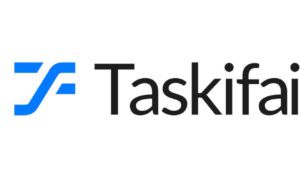Sending an email is one of the most commonly used strategies to attract new talents to a company such as a real estate agency. However, many companies are already using this channel to help fill their ranks, so much so that it’s becoming a challenge for an email to stand out from a sea of recruitment messages from eager headhunters and human resources team members.
In fact, there are estimates that by 2022, the total number of emails sent will go beyond 347 billion per day. For marketers and recruiters, this might mean that it will become more difficult for your email to catch the attention of its intended audience.
There’s no assurance that a particular talent will open the recruitment email you sent them, especially if this person is also being actively recruited by other companies. Still, it’s entirely possible to improve your email’s chances of being seen by your target audience. You can follow this guide to creating an effective recruitment email template from Brokerkit, for example.
In addition to taking note of what you should do, it’s also worth it to look into the common email mistakes that recruiters commit, thereby lowering their chances of being seen by an experienced or a promising agent. Here are some of the most common email mistakes that you should avoid when composing template emails or customizing recruitment messages:
Choosing an Email Subject Line That Screams Clickbait
It’s no secret that many people these days are aware and wary of emails with clickbait subject lines. For the lucky few who have been spared from viewing a lot of sensationalized news online, clickbait refers to a headline that’s designed to entice the readers to click on a particular link. This term is often associated with articles and images that are framed to elicit an intense response from the reader but fail to deliver the “mind-blowing” information that they promised in the first place. It’s also used in email subjects to improve the chances that the recipient will actually read the email.
Crafting a clickbait email subject used to be an effective way of increasing open rates, but not anymore. People have grown tired of being bombarded by superlative-laden subject lines day in and day out that they often skip these titles, especially if they don’t know who sent these messages. Instead of promising your readers the best career opportunities of their lives, why not go for a more down-to-earth and straight-to-the-point strategy? For example, you can craft a more personalized subject, provide a solution, or establish commonality with the reader to entice them to listen to what you’re offering. Also, consider that many readers are checking their emails on mobile, so keep the subject as short as possible.
Not Doing Enough Research About the Candidate
While templated messages can help recruiters accomplish more in a shorter amount of time, it doesn’t always mean that these emails can show good results. At some point, even if an email is addressed to a particular reader, it becomes very apparent that this message is being sent to a long mailing list. Remember: adding the recipient’s name to the email is just one of the many ways that you can make the message look more personal.
Getting a little personal can help you make the reader feel that you’re eager to work with them in your company. In addition to using their name, it’s a good idea to include how you know them, especially if the reader doesn’t know you or the company you represent. Perhaps the reader has attended an event or webinar organized by your business? Or maybe you got their email when they downloaded a white paper from your online archive? Getting a little personal while still talking business is a tough balancing act, but if you pull this off correctly, you’ll be able to get the receiver to read your message from start to end.
Omitting Your Company’s Culture in the Message
In addition to expressing your interest in acquiring the services of a particular talent, you also need to give the recipient a good idea of what they stand to gain by joining your company. Aside from the basic benefits that you offer, what perks can an employee or agent enjoy in your company? This is a great time to focus on your company’s culture and how it offers opportunities for career growth, skills development training programs, and an environment that promotes a healthy work-life balance.
Failing to Include a Clear Call to Action
Let’s say your email has gotten past the major hurdles. The recipient has opened and read it to the end. What comes next? How can they tell you that they’re interested in applying for the position that you’re hiring for? Should they email you back, call your company, or click a link to get started on the application process? It’s a must to include a clear and specific call to action in your email. It’s also an option to offer a specific timeframe for a response if you want to reduce the mental power needed to respond properly to the email and to convey a sense of urgency. Before finalizing your message, check first that your email offers clear directions on how to proceed to the next step of the process.
How does your existing email template fare when compared to this checklist? If you’ve found a few mistakes present in your recruitment email, simply apply the solutions offered here to improve your open rate and the positive responses from your prospective candidates.



































